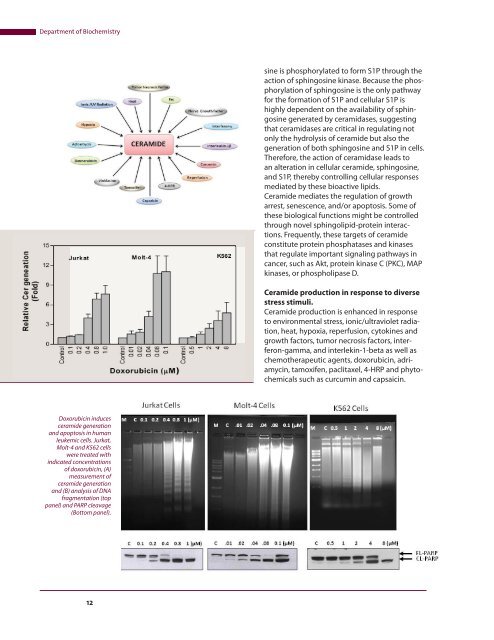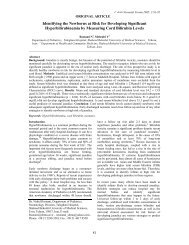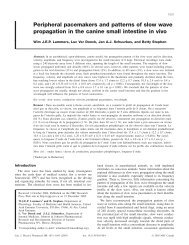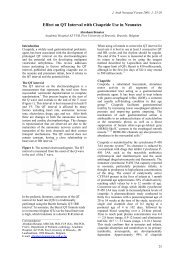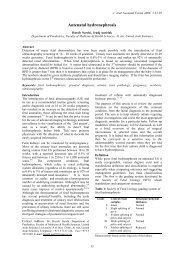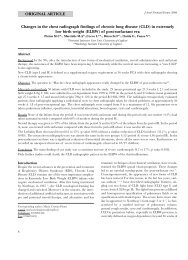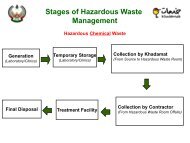Research Publications - College of Medicine and Health Science
Research Publications - College of Medicine and Health Science
Research Publications - College of Medicine and Health Science
You also want an ePaper? Increase the reach of your titles
YUMPU automatically turns print PDFs into web optimized ePapers that Google loves.
Department <strong>of</strong> Biochemistry<br />
Doxorubicin induces<br />
ceramide generation<br />
<strong>and</strong> apoptosis in human<br />
leukemic cells. Jurkat,<br />
Molt-4 <strong>and</strong> K562 cells<br />
were treated with<br />
indicated concentrations<br />
<strong>of</strong> doxorubicin, (A)<br />
measurement <strong>of</strong><br />
ceramide generation<br />
<strong>and</strong> (B) analysis <strong>of</strong> DNA<br />
fragmentation (top<br />
panel) <strong>and</strong> PARP cleavage<br />
(Bottom panel).<br />
12<br />
sine is phosphorylated to form S1P through the<br />
action <strong>of</strong> sphingosine kinase. Because the phosphorylation<br />
<strong>of</strong> sphingosine is the only pathway<br />
for the formation <strong>of</strong> S1P <strong>and</strong> cellular S1P is<br />
highly dependent on the availability <strong>of</strong> sphingosine<br />
generated by ceramidases, suggesting<br />
that ceramidases are critical in regulating not<br />
only the hydrolysis <strong>of</strong> ceramide but also the<br />
generation <strong>of</strong> both sphingosine <strong>and</strong> S1P in cells.<br />
Therefore, the action <strong>of</strong> ceramidase leads to<br />
an alteration in cellular ceramide, sphingosine,<br />
<strong>and</strong> S1P, thereby controlling cellular responses<br />
mediated by these bioactive lipids.<br />
Ceramide mediates the regulation <strong>of</strong> growth<br />
arrest, senescence, <strong>and</strong>/or apoptosis. Some <strong>of</strong><br />
these biological functions might be controlled<br />
through novel sphingolipid-protein interactions.<br />
Frequently, these targets <strong>of</strong> ceramide<br />
constitute protein phosphatases <strong>and</strong> kinases<br />
that regulate important signaling pathways in<br />
cancer, such as Akt, protein kinase C (PKC), MAP<br />
kinases, or phospholipase D.<br />
�������������������������������������������<br />
stress stimuli.<br />
Ceramide production is enhanced in response<br />
to environmental stress, ionic/ultraviolet radiation,<br />
heat, hypoxia, reperfusion, cytokines <strong>and</strong><br />
growth factors, tumor necrosis factors, interferon-gamma,<br />
<strong>and</strong> interlekin-1-beta as well as<br />
chemotherapeutic agents, doxorubicin, adriamycin,<br />
tamoxifen, paclitaxel, 4-HRP <strong>and</strong> phytochemicals<br />
such as curcumin <strong>and</strong> capsaicin.


